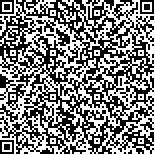|
|
|
| |
|
|
| 本文已被:浏览 1516次 下载 925次 |

码上扫一扫! |
|
|
| 中药益母草的化学指纹图谱及多组分定量分析方法的建立及应用研究 |
|
李宝辉, 李冬晖, 薛党党, 赵光
|
|
中国人民解放军联勤保障部队第九八九医院中心实验室, 洛阳 471031
|
|
| 摘要: |
| [目的] 应用高效液相色谱(HPLC)法指纹图谱技术联合多组分定量分析构建益母草原料药的质量控制方法。[方法] 应用高效液相色谱-二极管阵列检测器-质谱(HPLC-DAD-MS)法检测4个产地110份益母草,经遗传-偏最小二乘法(GA-PLS)筛选得到7个特征峰(5个被鉴定),并以此构建HPLC指纹图谱;应用HPLC外标法测定5个特征化合物(盐酸益母草碱、芦丁、槲皮素、山奈酚和芹菜素)的含量。[结果] 指纹图谱效能评价:4种模式识别模型,主成分分析(PCA)、线性判别分析(LDA)、最小二乘-支持向量机(LS-SVM)和径向基-神经网络(RBF-NN),均证实该指纹图谱具有很好的辨识度,可准确鉴别不同产地的益母草,以RBF-NN为最优(校正集识别率98.6%,预报集识别率97.3%)。特征组分定量分析:新疆、河南益母草各组分含量较高,河南、江西、湖北药材部分组分具有相近的含量。[结论] HPLC指纹图谱技术联合多组分定量分析,可用于益母草的产地鉴别和质量评价。 |
| 关键词: 益母草 HPLC 指纹图谱 定量分析 模式识别 |
| DOI:10.11656/j.issn.1673-9043.2020.03.19 |
| 分类号:R284 |
| 基金项目: |
|
| The establishment and application of chemical fingerprint and multi-component quantitative analysis for Leonuri Herba |
|
LI Baohui, LI Donghui, XUE Dangdang, ZHAO Guang
|
|
Deparment of Central Laboratory, 989 th Hospital of the Chinese People's Liberation Army, Luoyang 471031, China
|
| Abstract: |
| [Objective] To build a novel method for quality control of Leonuri Herba(LH) combining HPLC fingerprint and multi-component quantitative analysis.[Methods] HPLC-DAD-MS was applied to determine 110 LH samples,and HPLC fingerprint was developed based on seven characteristic compounds,where a structure was assigned to five,screened by GA-PLS. Then,quantitative analysis was performed on contents of leonurine hydrochloride,rutin,quercetin,kaempferol,and apigenin,by HPLC external standard methods.[Results] Performance evaluation of HPLC fingerprint:the good identification degree was confirmed by all the four pattern recognition methods,PCA,LDA,LS-SVM,and RBF-NN,while RBF-NN obtained best results with 98.6% recognition rate for calibration set,and 97.3% for prediction set. The quantitative analysis of characteristic components showed LH samples originated from Xinjiang and Henan had high contents for each compound. In additional,similar contents of some compounds were detected in LH samples of different origins.[Conclusion] It is wonderful tools,which combined HPLC fingerprint and quantitative analysis,to discriminate origins and quality evaluate for LH samples. |
| Key words: Leonuri Herba HPLC fingerprint quantitative analysis pattern recognition |
|
|
|
|
